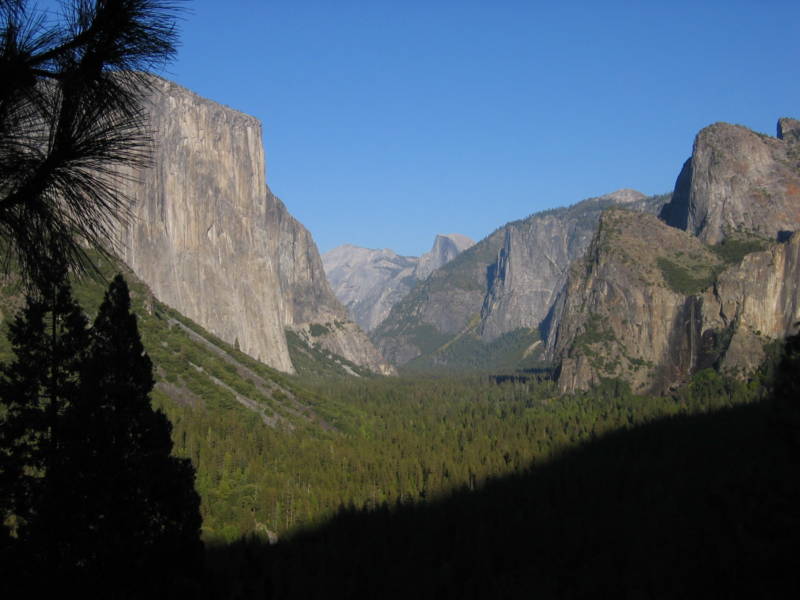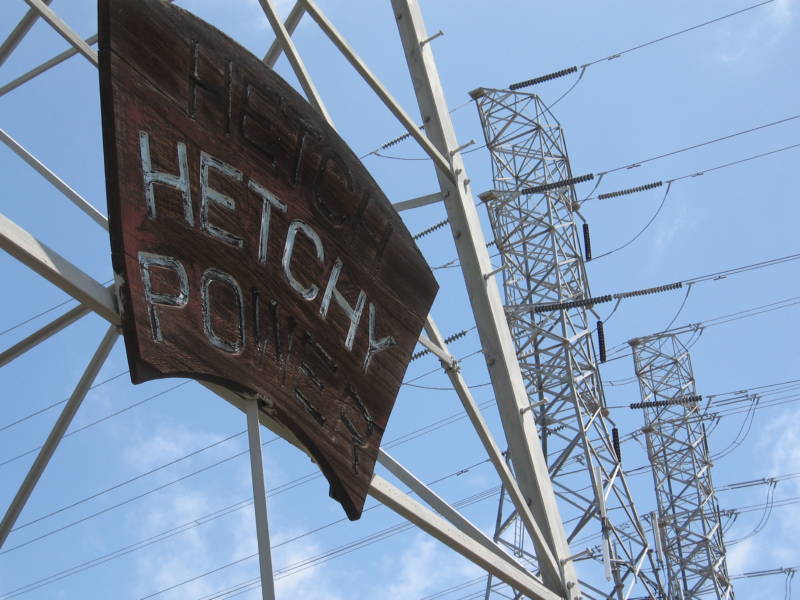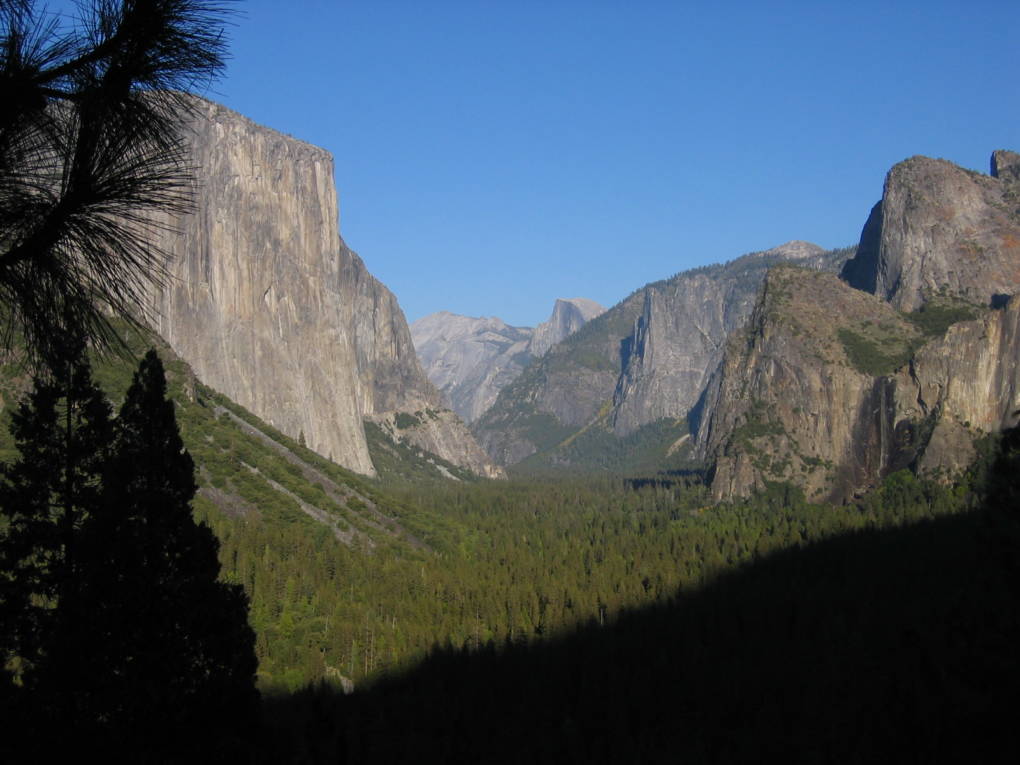San Francisco’s use of the Hetch-Hetchy Valley to store 85% of its water has come under fire…again.

Over the past couple of weeks San Francisco’s water supply and fixed annual fees for that water have come under attack by Republican Congressmen from other parts of the state. The first parry came from Representative Dan Lungren who represents the area stretching east from Sacramento. Lungren has a self-proclaimed “love affair” with Yosemite and thinks it’s worth spending some money to find out if restoring the valley is feasible. On KQED’s Forum program, Lungren argued that, “The possibility that we might have a second Yosemite Valley is something that at least I believe ought to be looked at. And yet everyone who opposes us seems to be afraid of looking at the facts.”
The other big threat to San Francisco’s pristine water supply comes from Representative Devin Nunes, a Republican from Tulare county. The Bay Citizen’s John Upton reported this week that Nunes is proposing that Hetch-Hetchy fees be used for deficit reduction.
Rep. Devin Nunes, a Republican from Tulare, said the current low rent amounts to a federal subsidy for San Francisco’s water and electricity supply and is unfair to farmers in his heavily agricultural district, whose water supply is diminished. He proposed to Congress’ Joint Select Committee on Deficit Reduction that the city be made to pay a fee comparable to what the government sought to charge Southern California Edison to operate a reservoir in Sequoia and Kings Canyon National Parks.
The extra money would be a drip in the country’s deep financial hole, but it would drive up the city’s municipal power costs and reverberate through the water bills of 2.5 million Bay Area residents.
San Francisco pays a fixed rate of $30,000 per year to use Hetch-Hetchy as a reservoir, a rate set in 1913 by the federal Raker Act. Nunes has proposed raising San Francisco’s annual fee to $34 million. That’s million, not thousand.
The Raker Act is central to both of these attacks on San Francisco’s claim to Hetch-Hetchy. Lungren contends that San Francisco violates the law by not using its other water resources first and failing to use newer technologies to improve efficiency. Ed Harrington, general manager of the San Francisco Public Utilities Commission, doesn’t buy that argument. He says that residential water users in San Francisco use only a third of the water that Orange County residents use and are some of the most conscientious water users in the state. “I would put my money on San Francisco where we have done a lot of things to conserve the use of water as opposed to try and build new plants in Golden Gate Park and places like that to recycle it,” he told Forum.
[module align=”right” width=”half” type=”pull-quote”]”John Muir defined it as one of Nature’s rarest and most precious mountain temples.”[/module]
“This idea that we are in violation of the Raker Act is simply not true,” Harrington said, in reaction to Lungren’s core complaint. He then made a historical argument about the intent of language around efficient use in the Raker Act. “There was a concern in the Central Valley that as we built Hetch-Hetchy we would bring water into the Bay Area for agricultural purposes,” he explained. He contends that Central Valley growers didn’t want competition, but that “the Congressman has chosen to stretch [that language] to make his point.”
This argument isn’t just about Republican Congressmen taking on Democratic San Francisco. There are plenty of environmentalists who agree that San Francisco should return the valley to its pristine state. “John Muir defined it as one of Nature’s rarest and most precious mountain temples,” says Mike Marshall of Restore Hetch-Hetchy, who also makes a climate argument for restoration. “When we talk about climate change we should look at ecological restoration as one of those issues,” he told Forum listners. “No one is really looking at our ability to absorb carbon.”

Opponents to Representative Lungren’s plan say that restoration has been proposed many times and rejected as too expensive and detrimental, both to the 30 Bay Area cities that use Hetch-Hetchy water and to the 400 megawatts of clean power generated by the dam and used to power big electrical consumers in San Francisco, like Muni and San Francisco General Hospital. And, they claim that removing the dam would undoubtedly cause damage to Yosemite Park itself.
6 thoughts on “Drain it! Pay More for the Water! The Hetch-Hetchy Saga Continues”
Comments are closed.


Mr. Harrington’s reading and interpretation of the Raker Act provision relied on by Lungren is simply wrong. In a lengthy legal opinion on the subject a few years ago leading California water law expert Stuart Somach put it very clearly — “it is reasonable to conclude that Congress also intended for CCSF to rely on Tuolumne River water only to the extent it had fully developed its other resources. Nothing in the language of the statute fixes this limitation as of a particular time; accordingly, CCSF is arguably under a continuing obligation to develop its own resources, as by recycling, conservation, desalinization, and other available means, in order to relieve the pressure of its exports from the Tuolumne River and the Hetch Hetchy Valley.”
Either these headlines are misleading, or people are deluding themselves. If we drained Hetch Hetchy, it would be a long LONG time before you had anything resembling another Yosemite Valley. No one alive today would be able to see it.
Hetch Hetchy Valley in Yosemite National Park can be restored without anybody losing water or power – read the studies.
And Snoogins, visitors from around the world would visit the valley to see it returning to life – but yes, it does take a century to grow a one hundred year old tree.
Yeah! I know I’d travel around the world to see a mudhole.
Some things are worth waiting for, and we do them for posterity rather than instant gratification. Whether restoring Hetch-Hetchy Valley is feasible or not, long-range thinking is crucial to any decision we make these days.
Given the budgetary problems across the nation – it is absurd to be talking about spending any additional money on this topic. If we really want to do some good for the environment, we shouldn’t be spending money on tearing down a much-needed and relied upon dam only to go and move the environmental impacts elsewhere. If we get rid of the Hetch Hetchy reservoir, where do people think the water is going to come from? What would it take to recreate this part of the system elsewhere? The price tag is in the billions. We – as a society – could be spending that money elsewhere and more wisely to address serious environmental concerns that are affecting our every day life as opposed to trying to restore a valley by moving the impacts elsewhere.